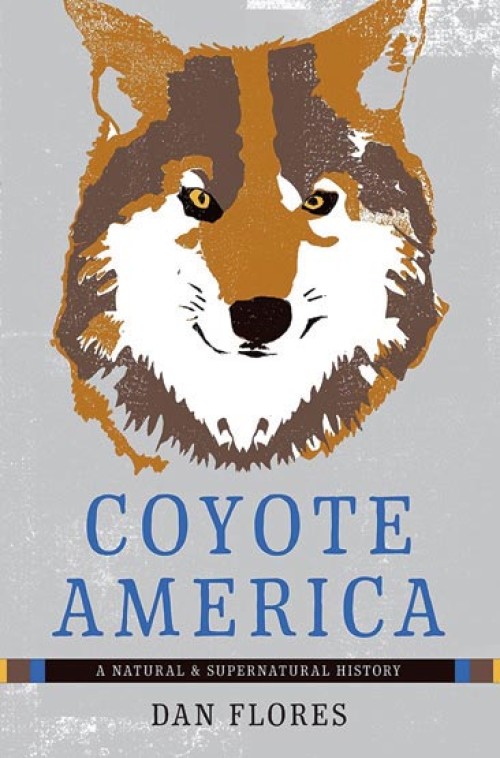by Dan Flores
Basic Books, 2016
For the past 150 years, various federal, state, and county agencies have done their best to erase coyotes from the American landscape. We have attacked them with guns, dynamite, and poison from every conceivable vantage point, from the back of a horse to the seat of an airplane. Secreted away in remote Utah, a federal compound, which calls itself the Wildlife Services’ Predator Research Facility (WSPRF), a division of the US Department of Agriculture, is devoted to the extermination of troublesome predators, particularly coyotes. WSPRF is quite good at what it does. Between 2006 and 2011, the agency dispatched more than three million of them.
But…harassing and killing of coyotes, writes Dan Flores, in his delightfully fresh and colloquially rich new book, Coyote America: A Natural & Supernatural History, only “triggers the same set of responses, adaptations hardwired by evolution” that over deep time has enabled coyotes to survive several million years of persecution by various and more robust species of wolves. After all, a coyote is merely a small wolf known to biologists as Canis latrans. Although in Lewis and Clark’s day it was called “prairie wolf,” today “urban wolf” might be just as fitting, because coyotes currently reside even in the hearts of our major cities. “Hound it and mark it for extermination,” writes Flores, “and not only will its biology defeat you every time, but it will colonize into new settings where you never in your wildest dreams expected to confront yellow eyes peering out of the twilight.” Like in Manhattan. Or Boston, Philadelphia, Washington D.C., Chicago, Detroit, Atlanta, and Miami, to mention several less than wild landscapes coyotes have recently invaded. For most people living in New York City, a coyote slinking in the shadow of a high-rise may be the largest native mammal they ever see.
Flores points out (more than once) that coyotes are behaviorally, socially, and ecologically flexible, capable of dealing with extreme stress (a perfunctory nod to us). To cope with persecution, they increase litter size from four or five to up to fifteen; females breed their first year; pack size swells or shrinks depending on what’s for dinner, which can be anything from deer to grasshoppers to melons and corn. (Flores tells us that by mid-twentieth century, once packs of wild dogs were eliminated from urban landscapes, the stage was set for coyote colonization.) And city pickings are easy. In Chicago, for instance, coyotes raid Canada geese nests in the marshes along Lake Michigan and fawns in nearby upscale suburbs, both of which make people happy. In New York City, although they may take a feral cat or two, it’s rodents and garbage that tide them over.
This penchant for range expansion, Flores points out, is nothing new. Coyotes spread south out of the borderlands a thousand years ago, lured into central and southern Mexico by sprawling Aztec farms and cities. Today, they camp from the rim of South America to the edge of the Arctic Circle and from coast to coast.
What makes Coyote America such a delightful read is a meticulous graft of evolution, biology, American history (both ours and theirs), and indigenous mythology, which is all laced together with personal anecdotes, humor, and black and white photos. Like Sisyphus, we kept pushing the extermination rock uphill, and “Coyote,” writes Flores, “kept rolling it right back down.”
Upon finishing the book, I wanted nothing more than to hear coyotes, to reconsider what they are at the dawn of the twenty-first century – mostly prairie wolf with varying amounts of gray wolf and domestic dog. So, I rushed outside to listen. And wasn’t disappointed.


